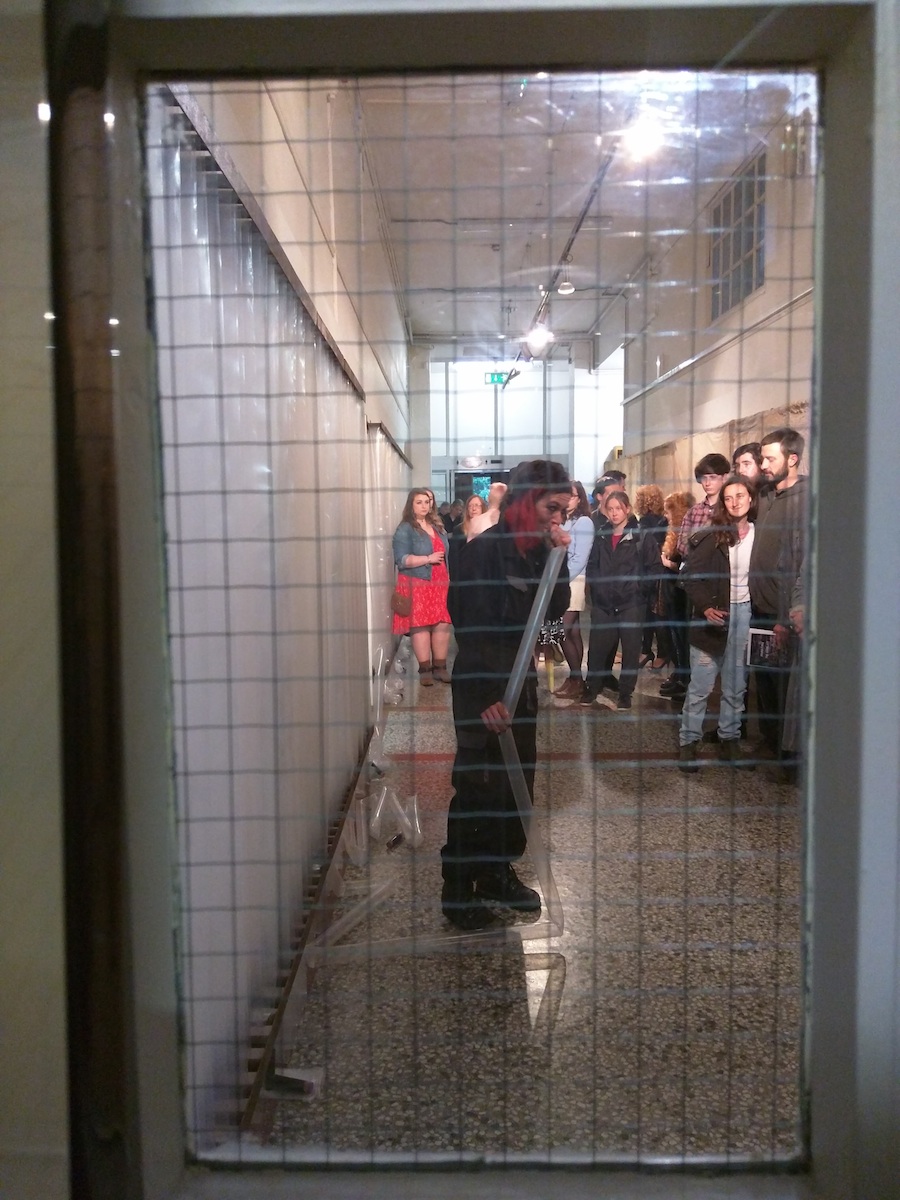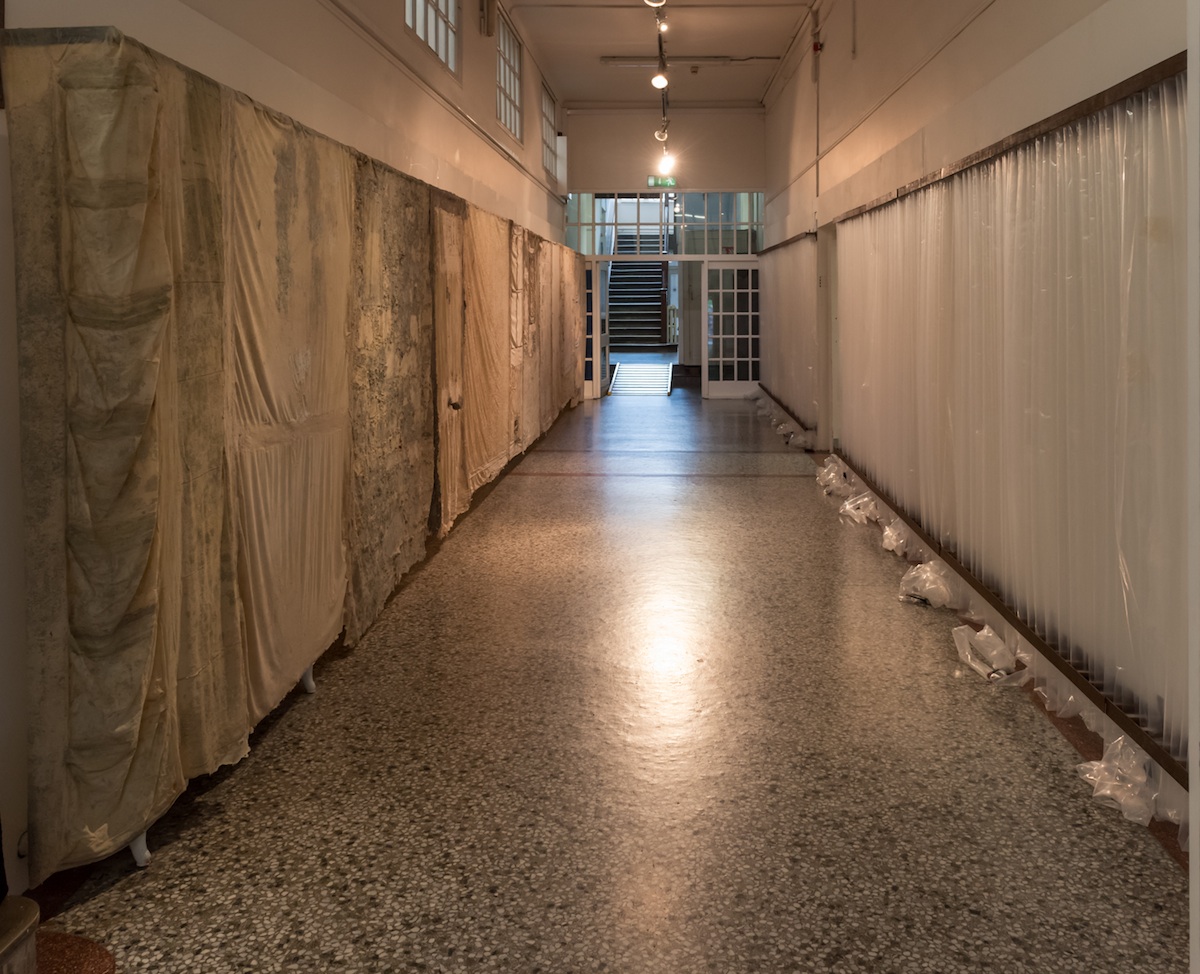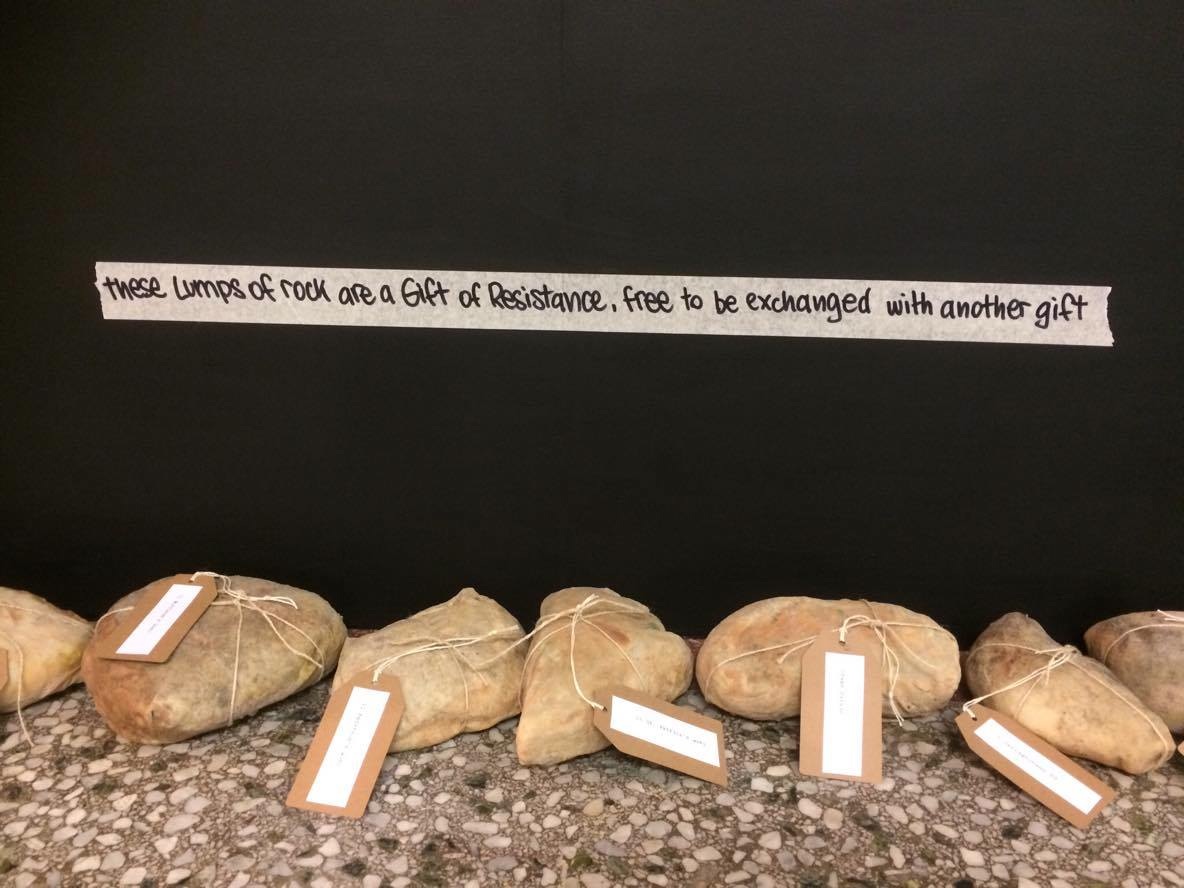Taf Hassam: Francesca Castellano
Here is what we have to offer you in its most elaborate form – confusion guided by a clear sense of purpose.
This quote from Gordon Matta-Clark’s Notes on Anarchitecture could almost, and not without humour and irony, be repurposed as the new banner for the Cork City Council after recent months have seen the closure of multiple cultural spaces in the city of Cork – these include but are not limited to: Cork Community Printshop, Sample Studios (initiated by Crawford students), The Kino, Camden Palace Community Arts Centre, and most recently the departure of Plugd Records and Gulpd Café from the Triskel Arts Centre. It is a pattern that would be devastating for any city, and it has not gone unnoticed in this year’s degree show at the Crawford College of Art & Design, where themes of space, value, dereliction, and belonging were preeminent among the works.
With the aforementioned closures presently very much on the minds of audience attendees and practitioners in the cultural field, the work of Francesca Castellano, and her images of derelict and closed down art spaces, was poignantly fitting. In her Artist Statement she writes:
Breathing out, the lies of unwanted rules, the frustration caused by inequality, the anger for what is not needed, and the responses that segregate us to homogeneity. Breathing in, to inhabit otherness, to belong to each moment, to connect with one another on a deeper conscious level, and to become then a catalyst for change.
Breathing Presence is a performance captured on video and displayed as an installation. Here you see the artist, working at night, driving from street to street to wrap metres of plastic tubing, resembling hazard tape, around derelict buildings. The streets, like the buildings, are largely empty, as she inflates the tubing with her own breath.
For the exhibition, the same 800 metres of plastic tubing were hung over a steel rack placed within a corridor. Presented opposite, was another one of her pieces, Deconstructing the Derelict for which she recreated out of rubber latex casts and steel hollow supports, a derelict street, filled with impassable doorways.
Below the video and placed along the floor, were ‘lumps of rock’ wrapped with strings and tags inscribed with what might be addresses, and offered as ‘gifts of resistance, free to be exchanged for another gift.’
At first glance, the differing use of materials, from video, rubber, plastic, rocks, steel, to inserted texts made from masking tape and marker pen, seemed somewhat confusing in their display. But at the heart of the installation was a homemade publication titled, Inhabiting the Derelict.
The publication comprises photographs taken by Castellano of derelict sites in and around the city of Cork. Each photograph is accompanied by individual statements given by various artists, detailing their thoughts on the importance of creative space – vis-à-vis the rise of dereliction and need for homes and studio space in Ireland.
Perhaps made in direct response to the puzzingly titled overall exhibition, ‘Beyond Dialogue’, the publication seemed to be a direct call for meaningful dialogue, if not also action, while trying to find a language, sadly currently lacking, in articulating the values and needs for creative space.
As Lucy Finchett-Maddock eloquently put it:
Gone are the days when we can disappear into the night, disappear into and out of our minds, in and out of moments where we can reproduce ourselves in a pure anticipation of innocent appreciation of life, love and communality.*
Unless, as Francesca Castellano puts it, we “become a catalyst for change.” We can do this through dialogue and action, and I found it refreshing to see an artist use her skills to find a language that raises urgent issues currently affecting her own community.





